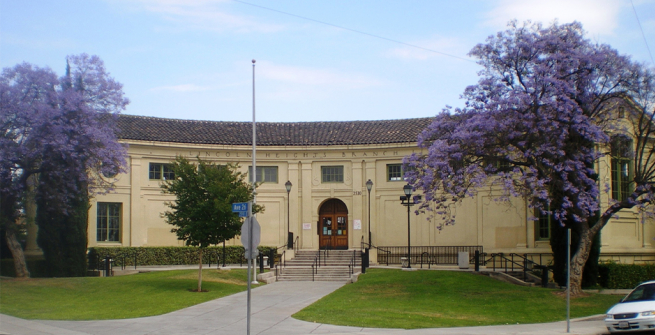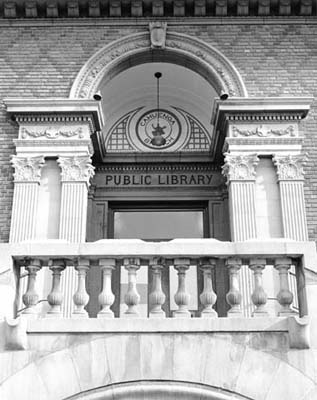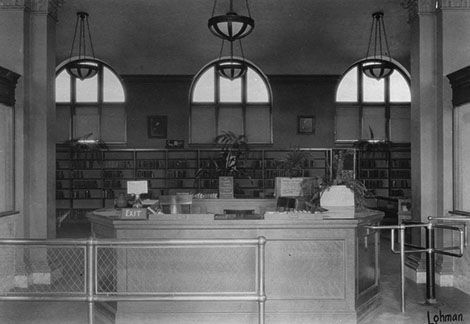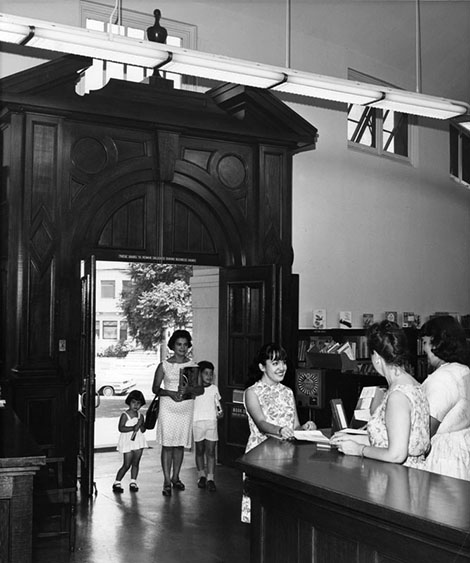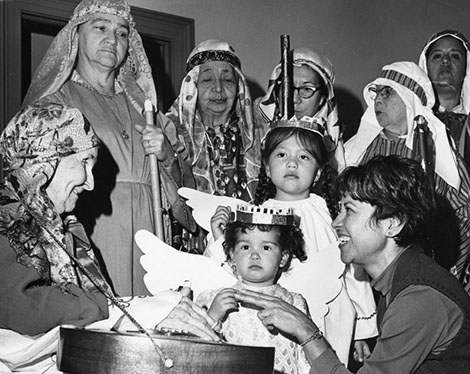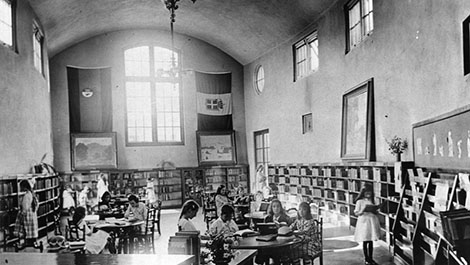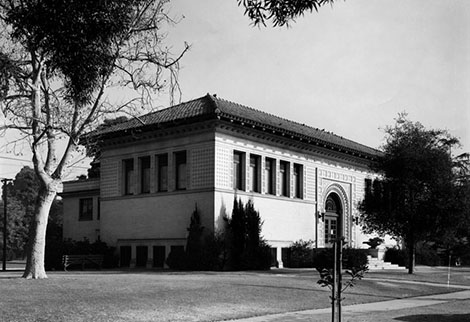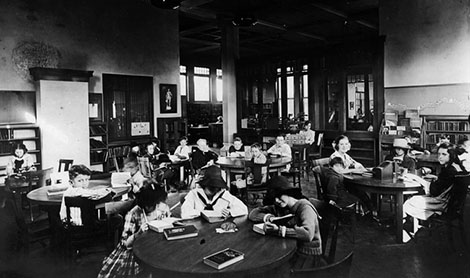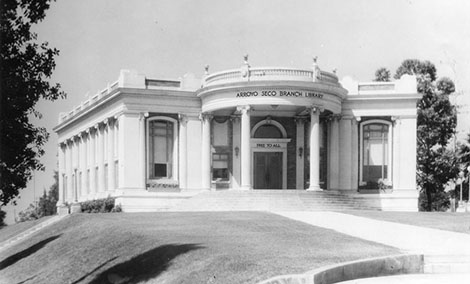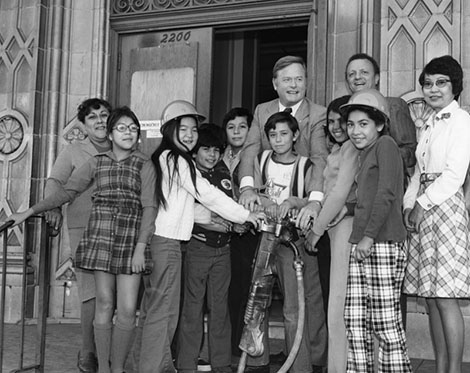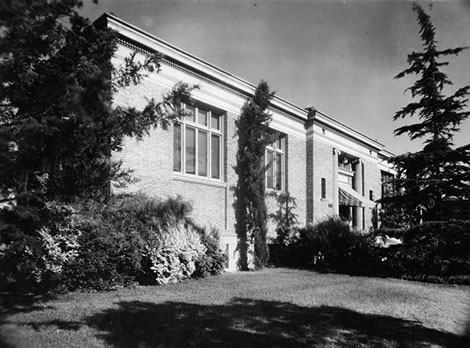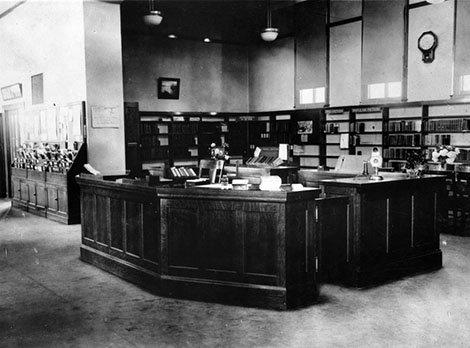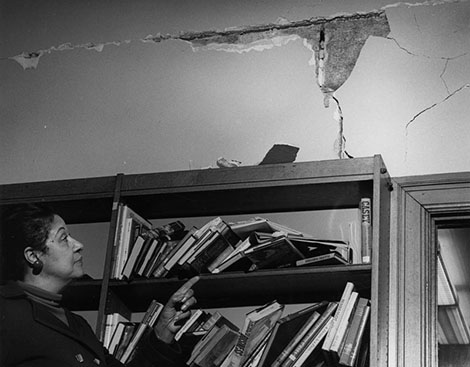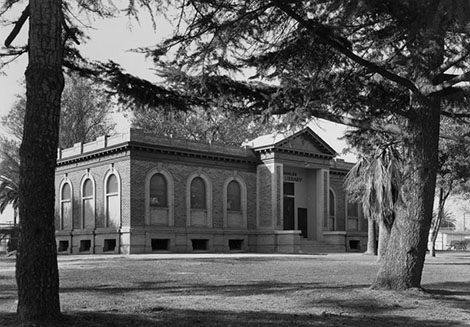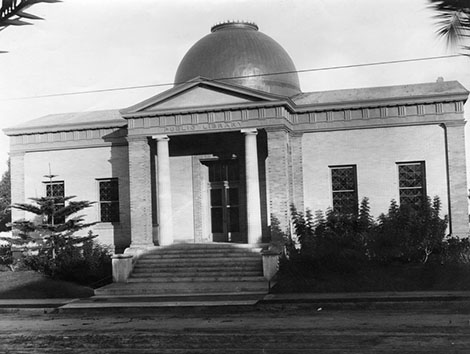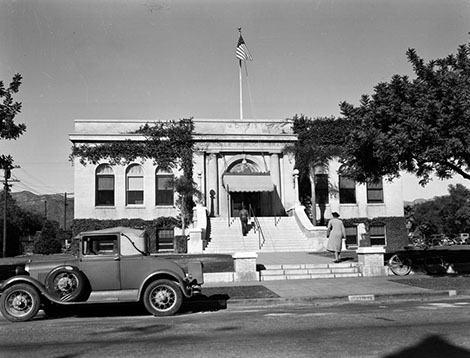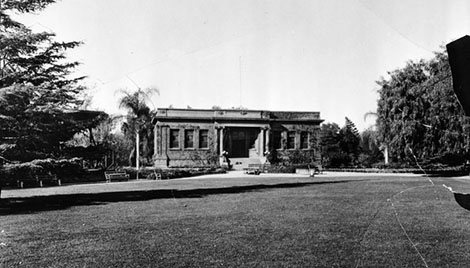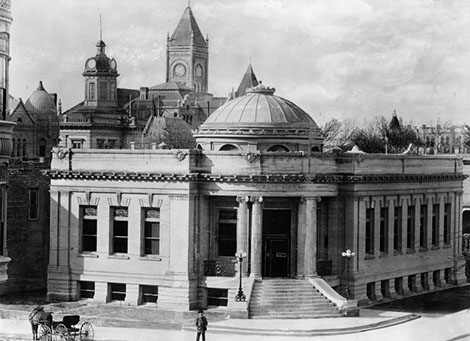Andrew Carnegie was born in Dunfermline, Scotland, in 1835 and immigrated to the United States in 1848. Landing in Allegheny, Pennsylvania, 13-year-old Andrew Carnegie started working as a bobbin boy, changing spools of thread in a cotton mill. He worked twelve hours a day, six days a week. Like any young man, he looked forward to Saturday night, but not to get into mischief, but rather to visit the home of Colonel James Anderson, a wealthy local man who allowed working boys to use his personal library for free on that night. As the U.S. did not have a system of free public libraries and Carnegie could not afford to patronize a private library, this was his chance to read for entertainment, education, and enlightenment. He was forever grateful to Colonel Anderson for his generosity and vowed that, were he ever able to do so, he would arrange it that “other poor boys might receive opportunities similar to those for which we were indebted to the nobleman”.
Carnegie went on to invest in railroads, oil, and steel, becoming one of the richest people in the world. He also became one of the world’s greatest philanthropists, giving away 90% of his wealth in later life. In an article written in 1889 titled The Gospel of Wealth, Carnegie noted that “In bestowing charity, the main consideration should be to help those who help themselves.”
He never forgot how Colonel Anderson’s generosity helped him to gain knowledge and learn about the world. He also never forgot his vow to help others have such an opportunity. Carnegie granted approximately $60 million in total to fund a system of public libraries (open to all) across the United States and also in Scotland, Ireland, Great Britain, and Canada. Carnegie’s grants helped build libraries in many communities that were unable to do so due to a lack of funds. Moreover, libraries help people further their education, expand their horizons, and entertain themselves, so his charity was indeed helping people help themselves.
Six Carnegie libraries were constructed between 1913 and 1916 in Los Angeles. Three remain, three have been demolished. The library's collection contains photos of these libraries plus other Carnegie-funded libraries in surrounding communities. Carnegie was feared and hated (during the worst labor dispute in history he refused to raise wages for his workers), but he was also revered and feted (high schools, concert halls, a cactus, and a dinosaur have been named after him). Nonetheless, many who never knew him (or even knew of him) and hold no opinion whatsoever of him have benefited from his charity with free use of their local public library.
The Cahuenga Branch Library of the Los Angeles Public Library (situated on Santa Monica Boulevard in East Hollywood) was built in 1916 with a $35,000 grant ($820,400 in today’s economy) from Andrew Carnegie. Built in the Italian Renaissance style, it served the local community of agricultural workers who tended the nearby orange and avocado groves and wheat fields. The Cahuenga Branch Library has been designated as a Historic-Cultural Monument and is listed in the National Register of Historic Places. It is still a fully functioning library.
The Lincoln Heights Branch Library was also built in 1916 with a $35,000 Carnegie grant. Designed by architects Hibbard & Cody, its Italian Renaissance design is based on Papa Giulia, a villa near Rome. Designated as a Los Angeles Historic-Cultural Monument and listed in the National Register of Historic Places, it originally featured an outdoor reading room. The Lincoln Heights branch is still in use as a public library today.
The Vermont Square Branch Library, located on 48th Street, was built in the Renaissance revival style. Designed by Hunt & Burns, it is one of the three Los Angeles public libraries funded by Andrew Carnegie that is still operational.
The Arroyo Seco Branch Library, funded by a grant from Andrew Carnegie and completed in 1914, was located at 6145 Figueroa Street. The original building was torn down in 1959 and the new Arroyo Seco Branch Library built on the same location.
The Benjamin Franklin Branch of the Los Angeles Public Library (known as the Boyle Heights Branch Library until the early 1920s) was designed by architect W.J. Dodd in the Classical Revival style. It was one of the libraries funded by a $210,000 grant (the equivalent of slightly more than $5 million today). It was demolished in 1974.
The Vernon Branch Library on South Central Avenue was built in 1915 with a Carnegie grant of $35,000 ($836,645 in today’s dollars). Boasting the Classical Revival style, it had an open-air reading room with a sliding sash that would convert the space into a closed room. The building suffered severe damage in the 1971 Sylmar earthquake and was demolished in 1974.
Watts was a small working man’s city with no library of its own. The city applied for Carnegie funding. A grant of $10,000 was received in 1913 (the equivalent of $242,000 today) and the Watts Public Library was built in 1914. Architect Elmore Jeffery designed the building in the Classical Revival style. Watts became the only Los Angeles County municipality to join the county library system before 1917. In 1926, Watts was annexed by the City of Los Angeles and the Watts Library became the Watts Branch Library. A new Watts Branch Library was opened in 1960 and the Carnegie building was razed in the 1970s.
The second building to serve as the San Pedro Branch Library was built with an initial grant of $10,000 from Andrew Carnegie, followed by a supplementary $375 from Carnegie and $500 from the City of Los Angeles. Designed in the Classical Revival style, it was used as a library from 1906 until 1923 when it became the site of the Chamber of Commerce. It later housed the Seamen’s Library. The building was demolished in 1966.
The Long Beach Public Library, designed by F. P. Burnham in Classical Revival style, was funded by a grant from Andrew Carnegie. The original building served as the city’s public library from 1909 until 1972 when it was closed due to a fire. The Carnegie building was demolished in 1973.
The Glendale Public Library (in Glendale, California) was funded by a grant from Andrew Carnegie. Dedicated on November 13, 1914, it was enlarged to twice its original size in 1926. It was in service until 1973 when a new building was built. The original building, built in Classical Revival style, was demolished in 1977.
The Monrovia Public Library, designed by architect William J. Bliesner, was funded by a $10,000 grant from Andrew Carnegie in 1905, with the City of Monrovia providing $1,000 for furnishings built by a local craftsman. The library opened on January 27, 1908, and was demolished in 1956.
The San Bernardino Public Library was funded by a grant from Andrew Carnegie and opened in 1904. Situated at the intersection of 4th Street and D Street, it was designed by architects Burnham & Bliesner. The building was declared unsafe in 1957 and razed in 1958.
The Riverside Public Library, designed by Burnham and Bliesner and built by J.W. Carroll, is California’s first Mission style Carnegie library. In 1901, the City of Riverside received an initial $20,000 Carnegie grant to build the library, with an additional $7,500 coming from Carnegie in 1908 for an extension. Riverside’s Chinese Memorial Pavilion now occupies the site of the original library.
Written by Annie Murphy. Originally published on the Photo Friends blog on January 8, 2018.
